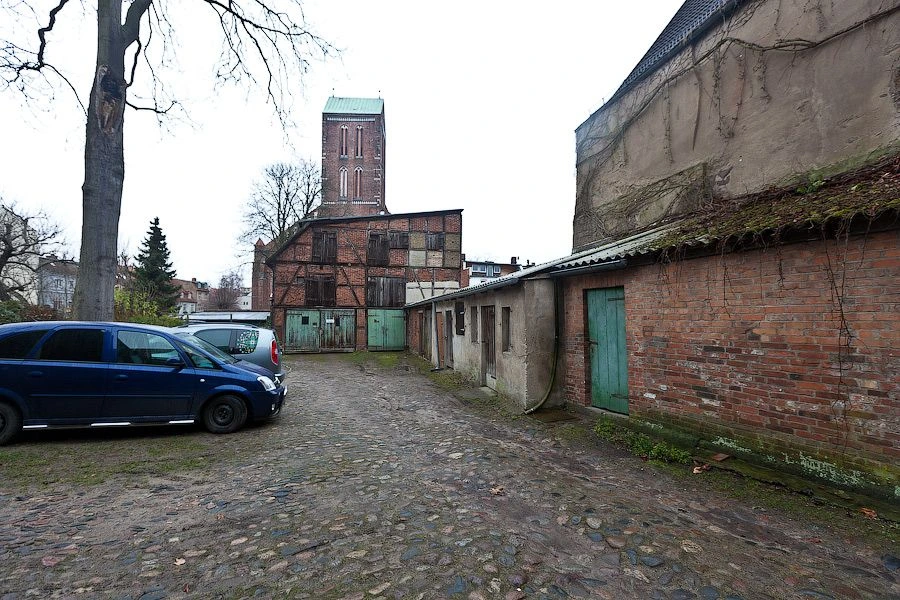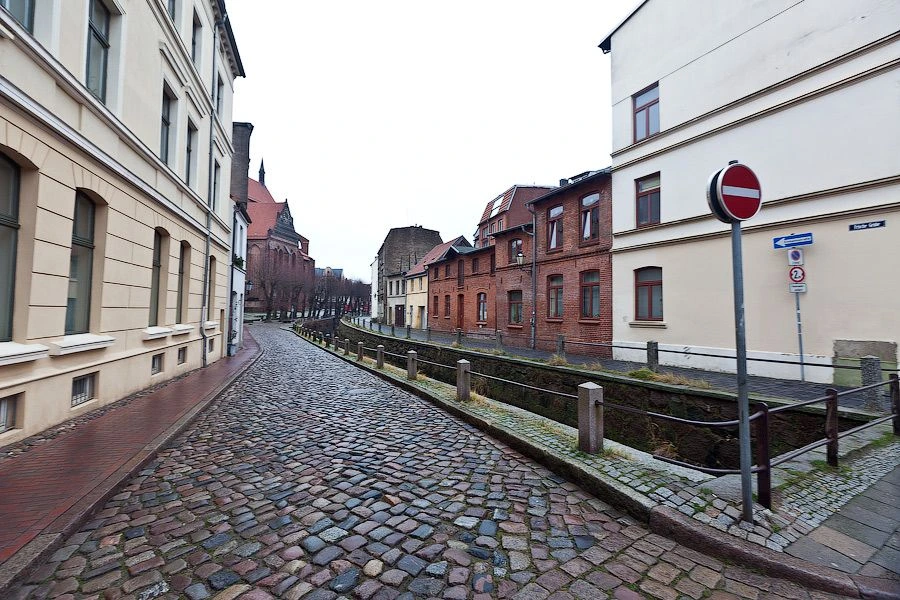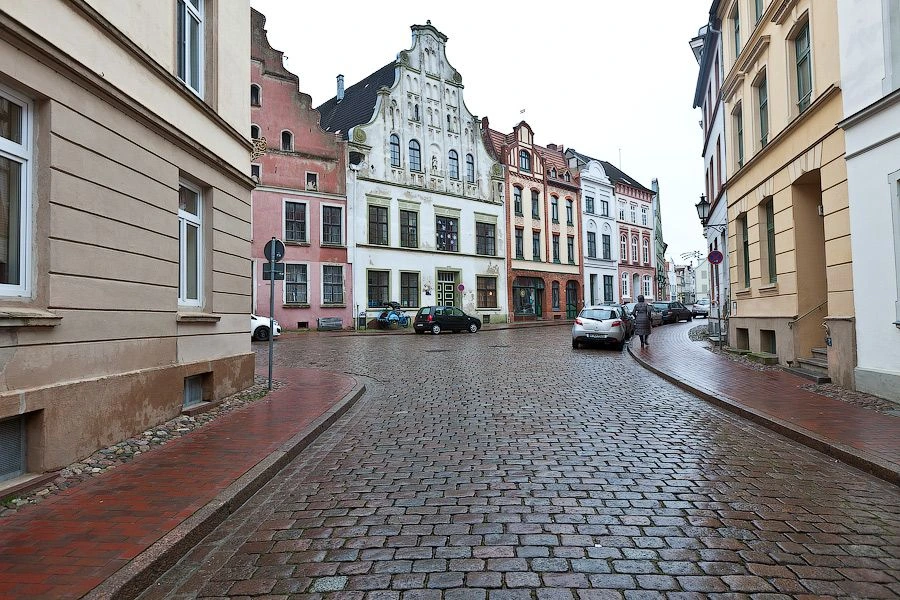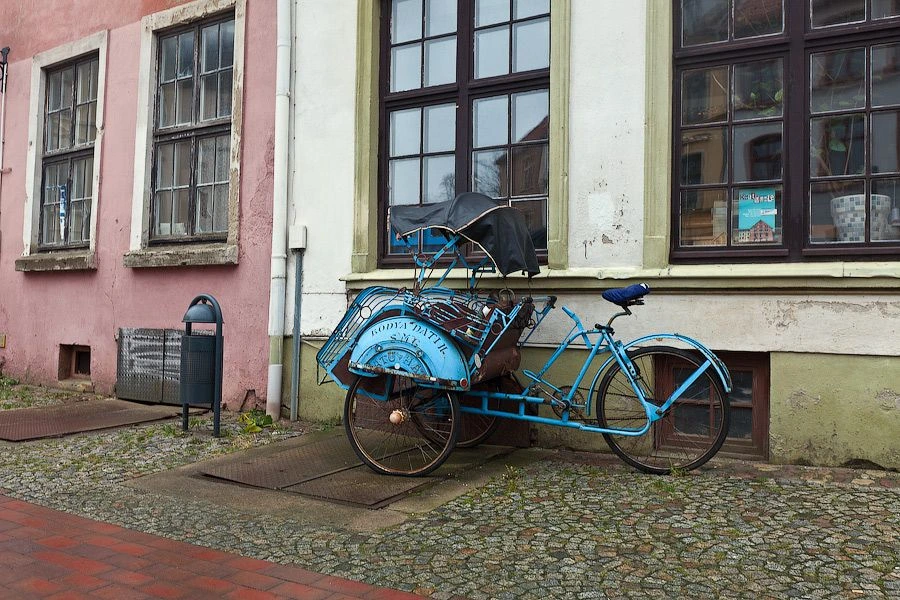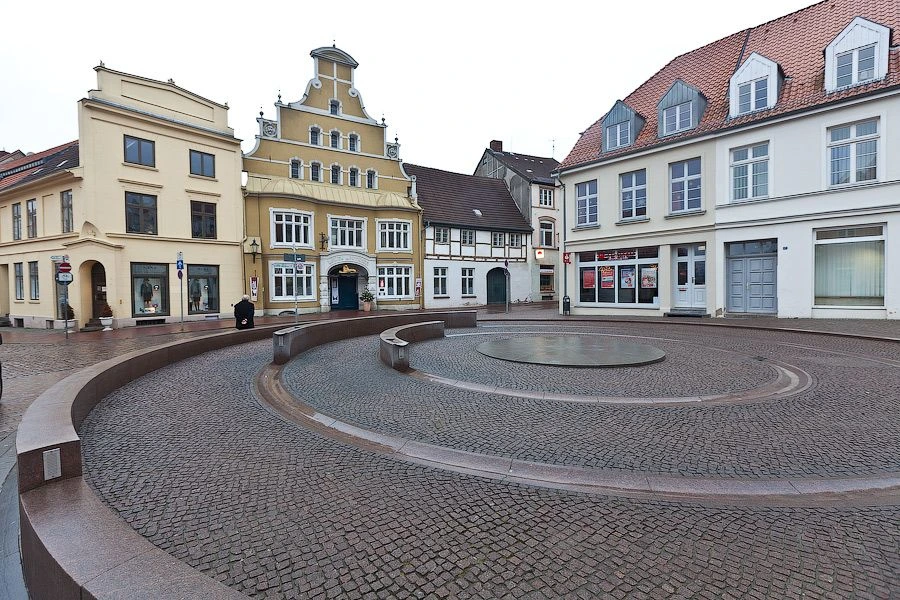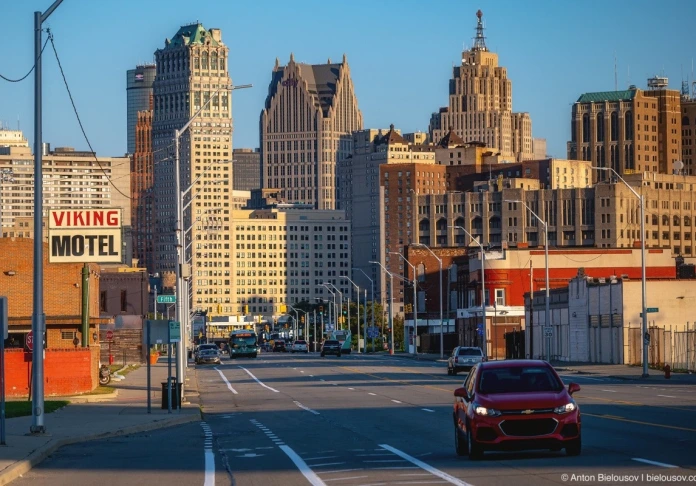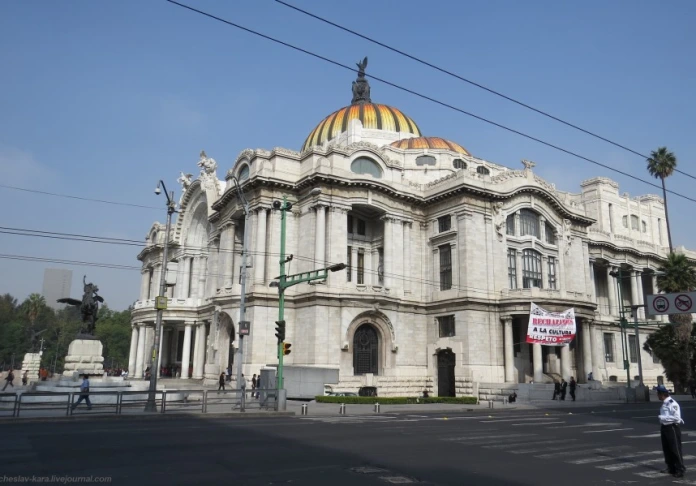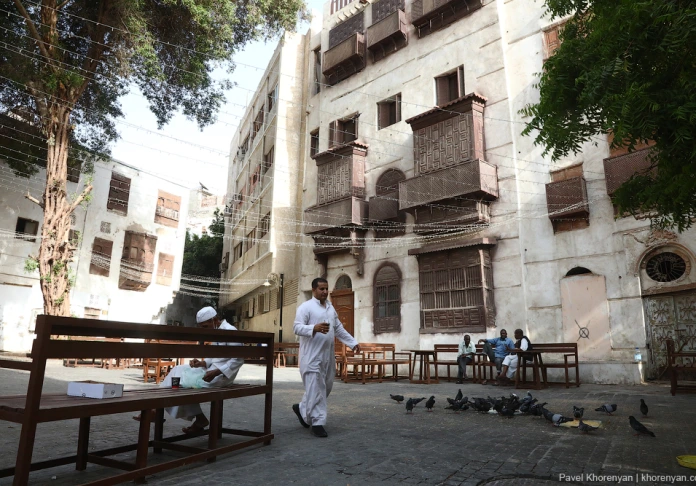The Hanseatic city of Wismar
In one of the days between Christmas and New Year, we thought it was worth a trip to some town in which we have never been.
Satisfying a passion for changing places and combining it with the regular weekend - went to Lübeck.
Lübeck seemed cold enough, not crowded.
We thought, and drove on, along the northern coast. Endpoint defined Wismar: another Hanseatic port city with a rich history. It is strange, but about him almost unknown: Tourists come here a little, or what?
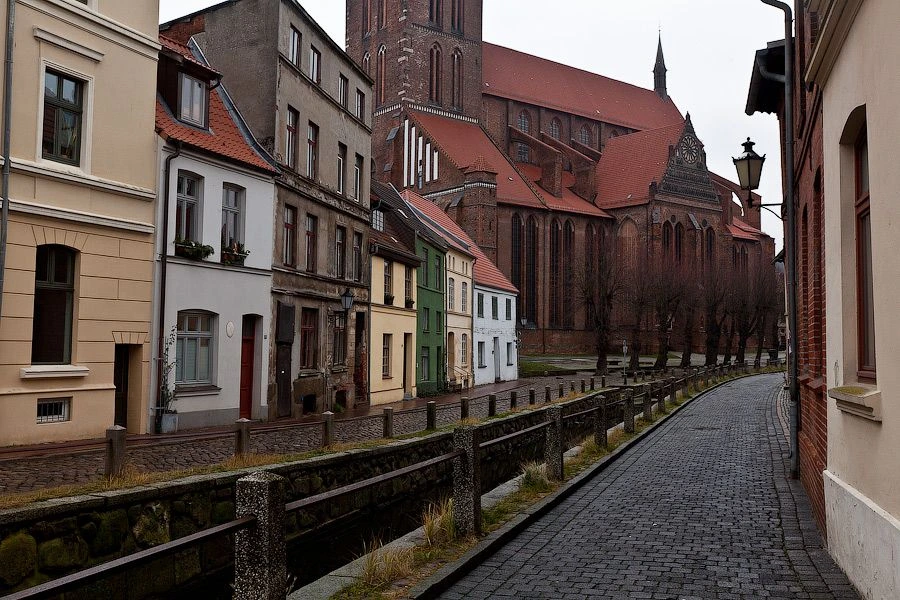
The exact date of the settlement called Wismar and the roots of this name is unknown, although the sound of the word consonant Slavic languages. It is known that in 1293 the city of Wismar together with Lübeck and Rostock organized trading Hanseatic League. From 1257 to 1358 the city served as the residence of the princes of Mecklenburg. In the city 70 times to hold general meetings to decide the issues Union. However, after the discovery of America trade routes shifted to the West, and Hansa ceased to exist. Since then, the city loses its meaning. Economic decline completed the Thirty Years War. According to the Peace of Westphalia in 1648, Wismar departed under the authority of Sweden, which is considered the city as its "largest fortress in Europe." In 1803, Sweden has laid the city and gave the supreme authority of the Mecklenburg 1,258,000 Reystalerov, retaining the right to return to the city in 100 years. Based on the rights of Sweden, the city of Wismar was not included in the Mecklenburg until 1897. In 1903, Sweden finally renounced their rights. Wismar still has some old laws "urban liberties," including the right to have its own flag.
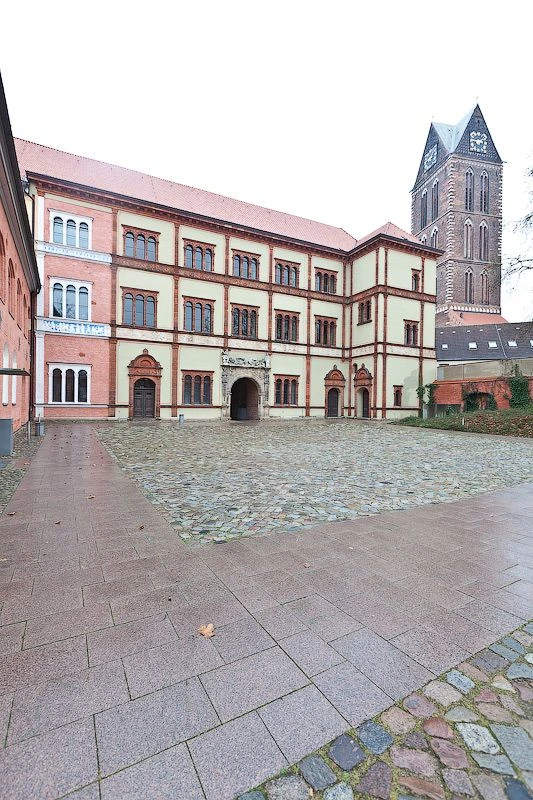
In war Wismar well pobombit; for example, the building of the City Court partially remake, which used ornaments and elements of the old buildings.
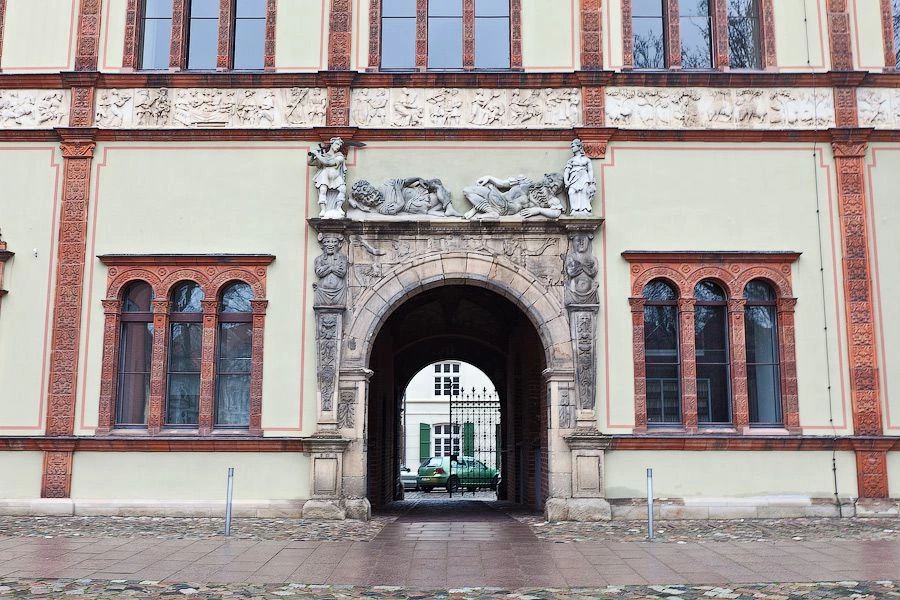
But all this did not stop in the city center include the UNESCO World Heritage List.
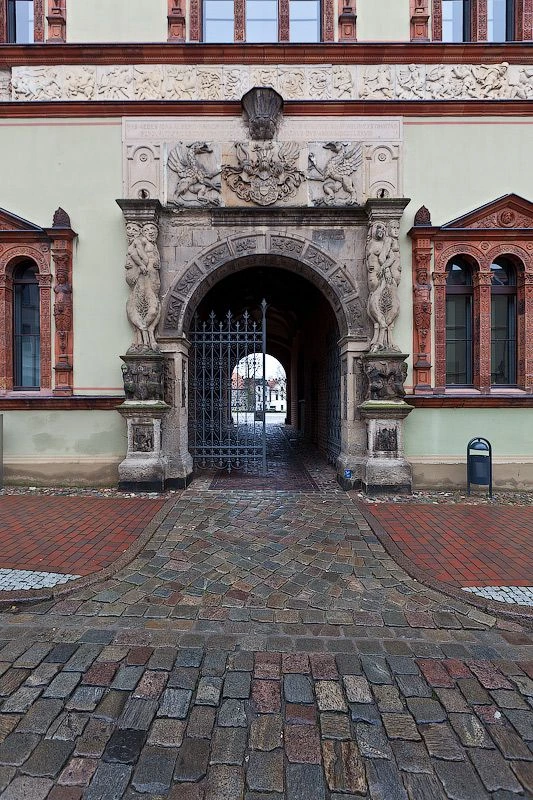
Guess what kind of building with barred windows?
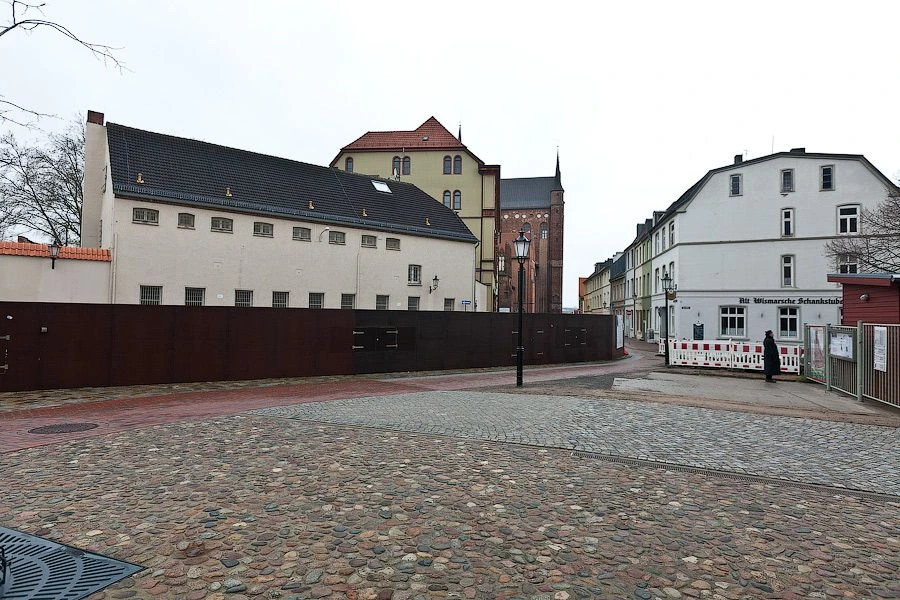
This - children colony
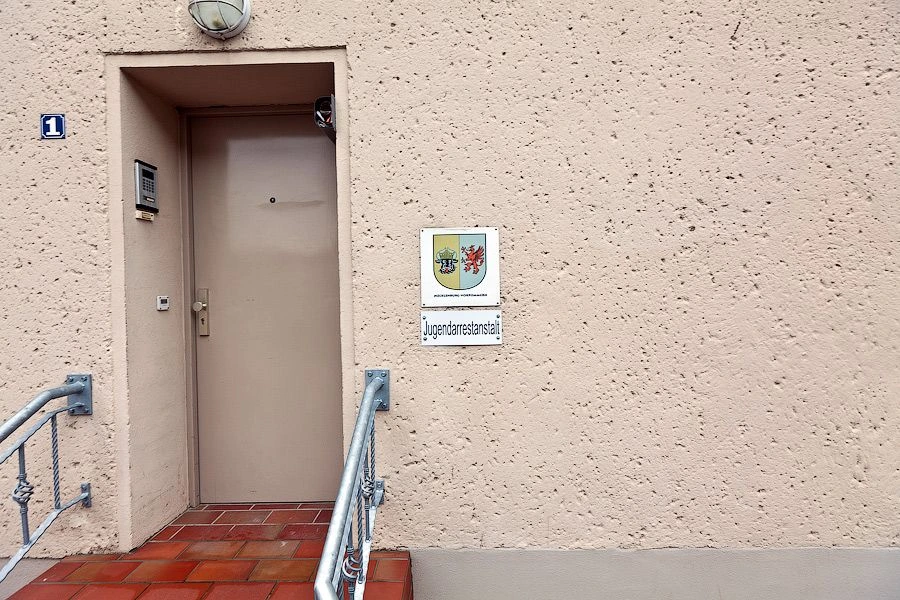
One of the main attractions of the old Wismar - Church of St. Mary.
Before the war, were among the largest North German church, in the style of brick Gothic.
In April 1945, during the bombing of the main building was heavily damaged.
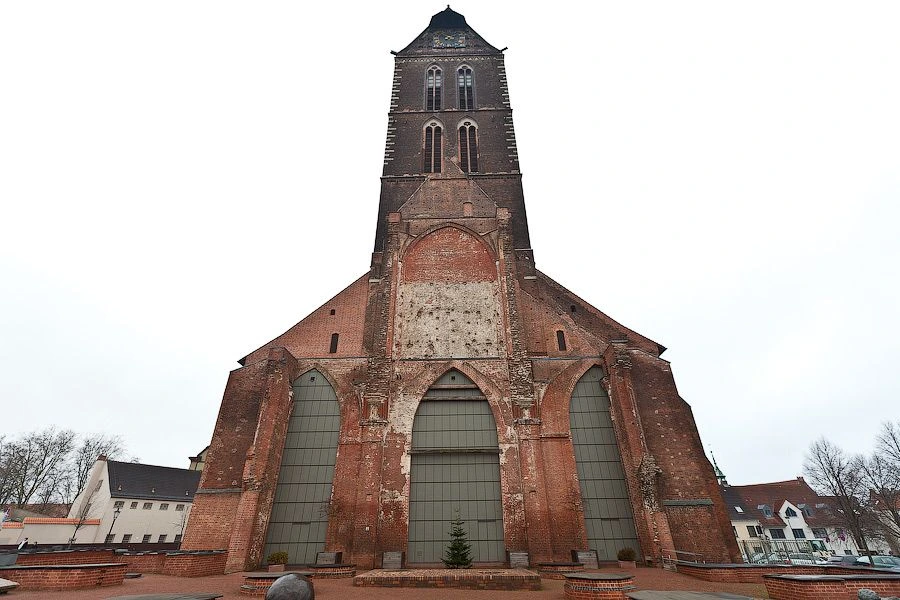
Ruins were finally blown up in 1960. The church was only a tall tower (81 m), on which hang the bells 9 XVI-XVII centuries. Here in 1647 the clock with a dial 5 × 5 m to four times per day perform one of 20 chorales.
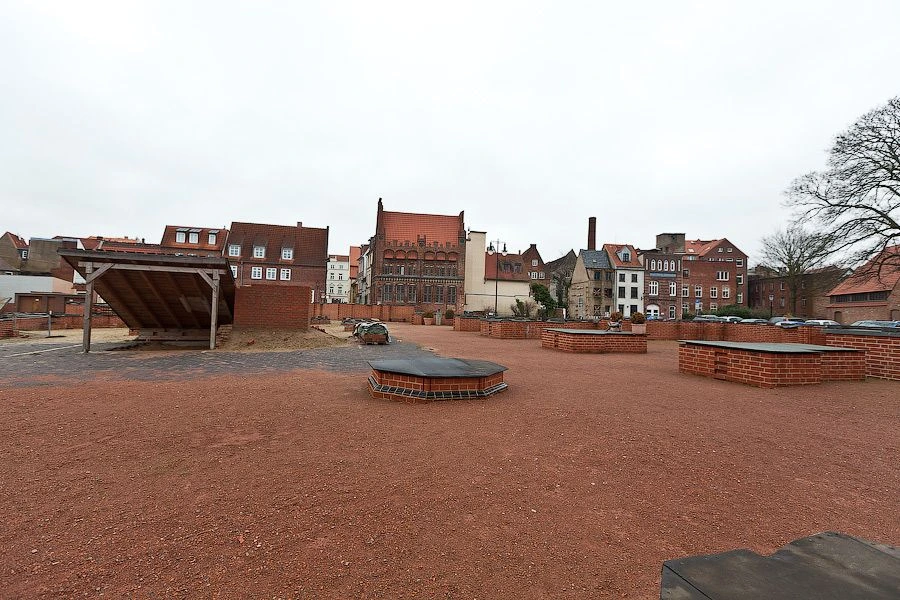
Now this area - a place for walking children and various installations.
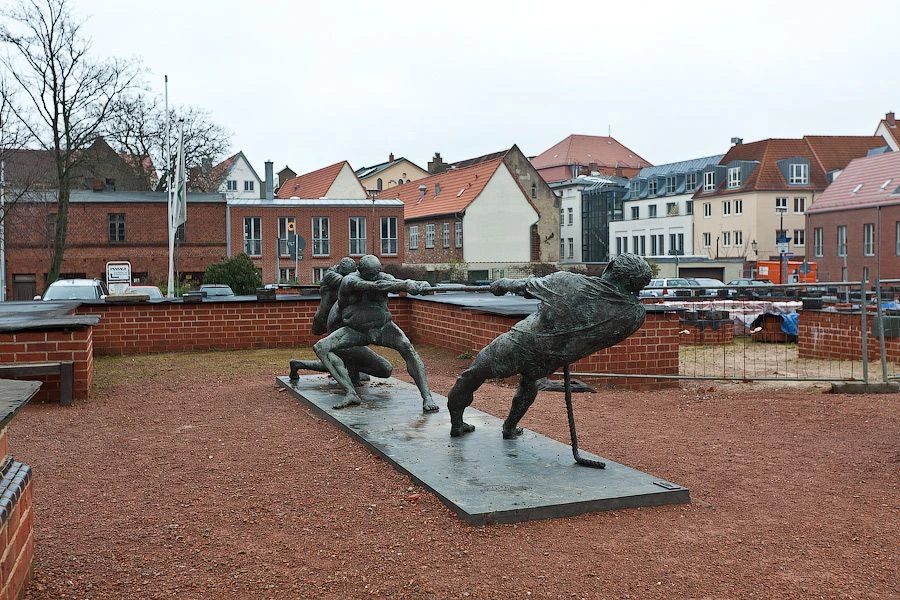
Especially charming to see it in five heat.
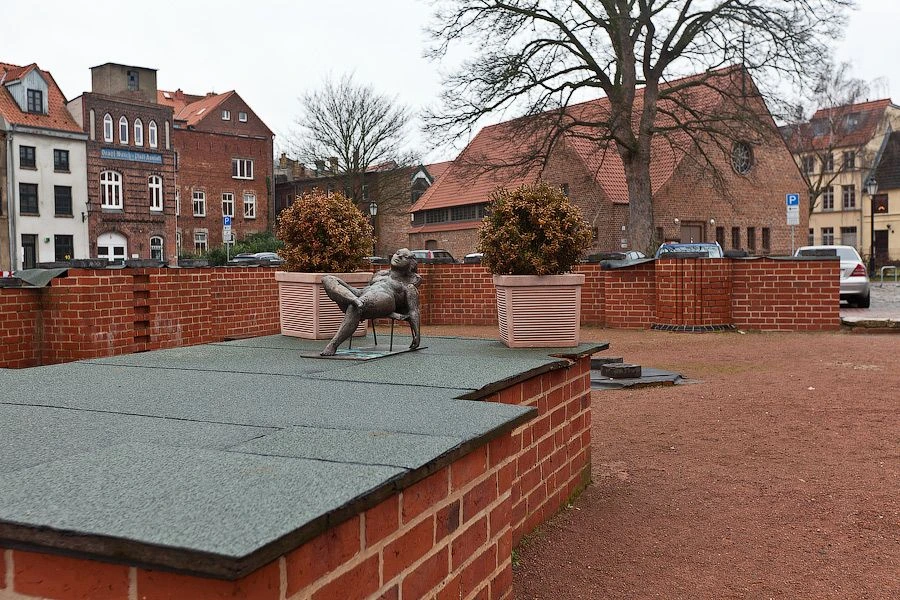
In memory of the bombed arhidyakonate there hung a sign.
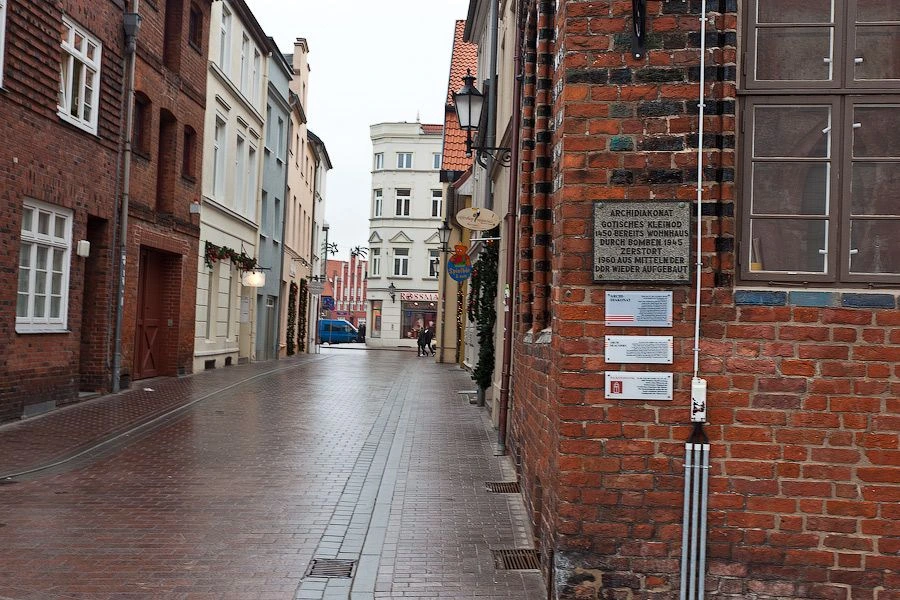
Pavilion, called Wasserkunst, until 1897, he served as a distributing point from which supplied water 220 residential and 16 public buildings. This pavilion, along with the church of St. Mary, rank indicate the most important sights of the city.
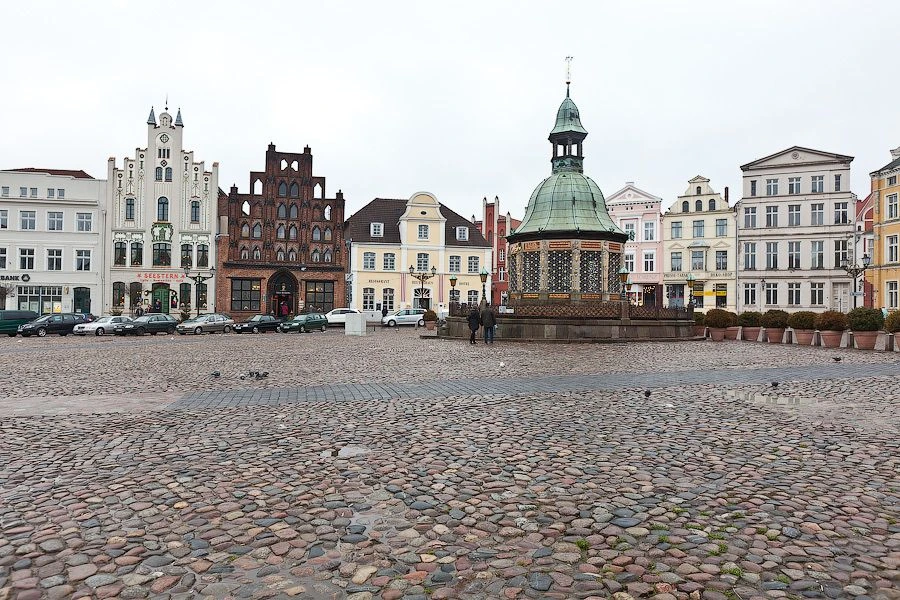
Let me remind you - it happens between the holidays and in Germany.
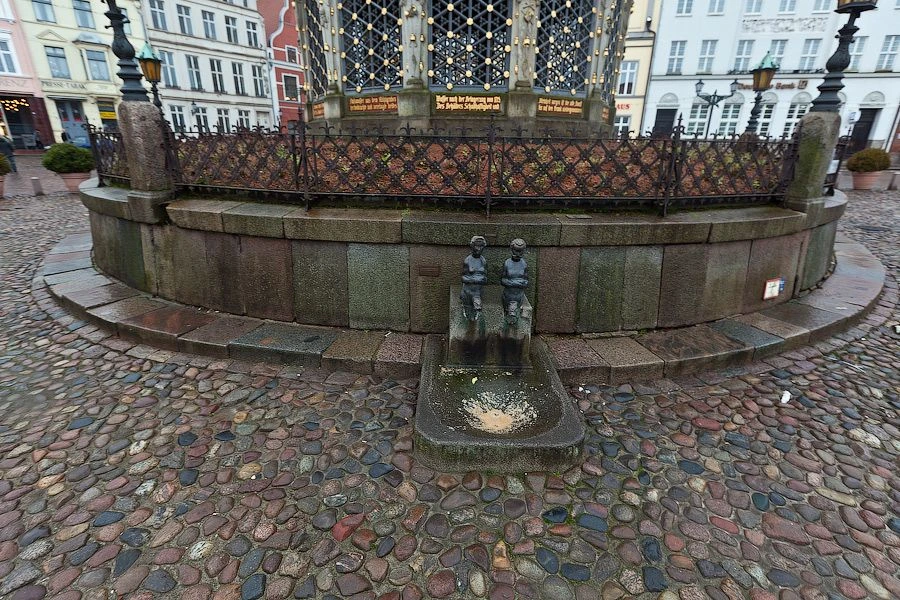
The city is sad enough - many houses boarded up or fall apart. Dirt on the side streets, obluschivshiesya facades.
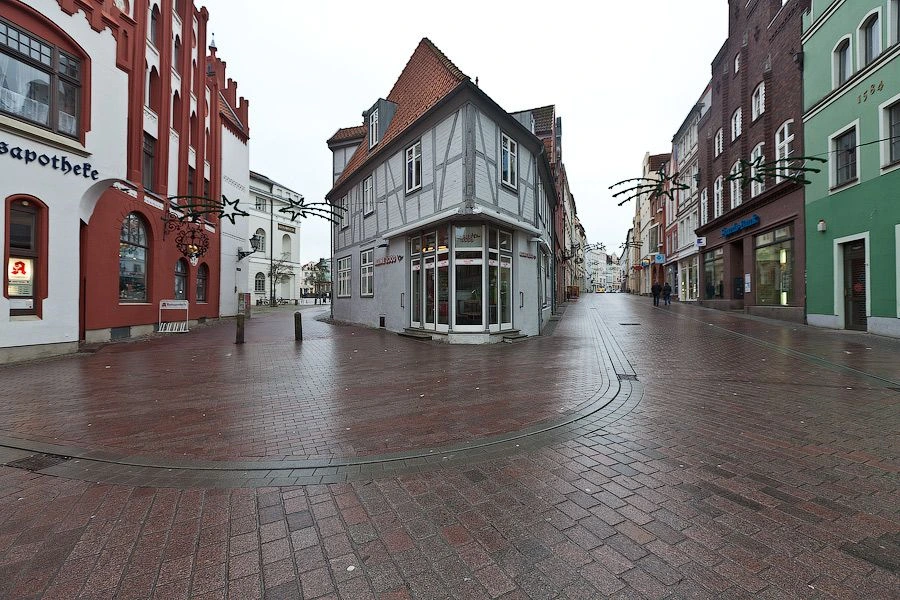
However, the Germans in the blood passion for embellishment, so here dofiga interesting signs.
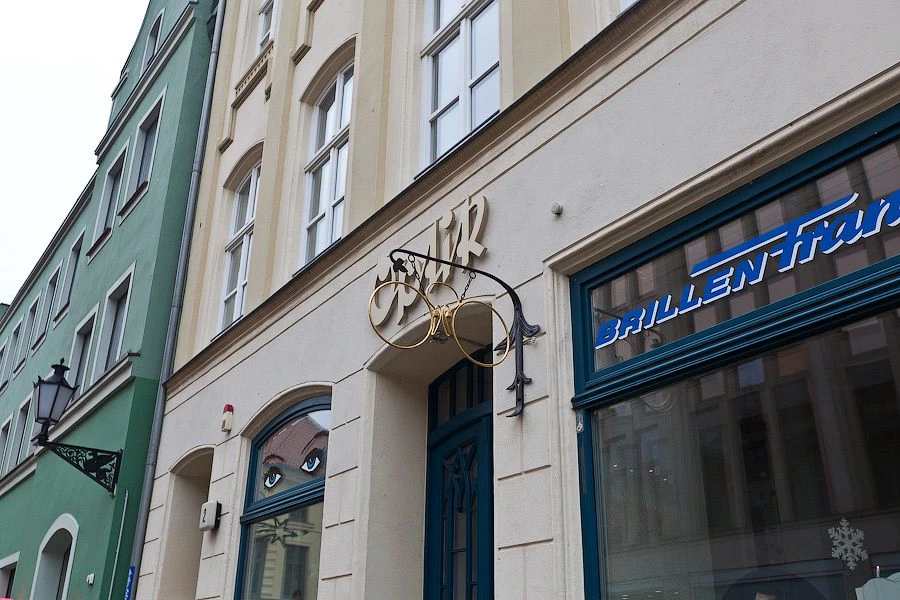
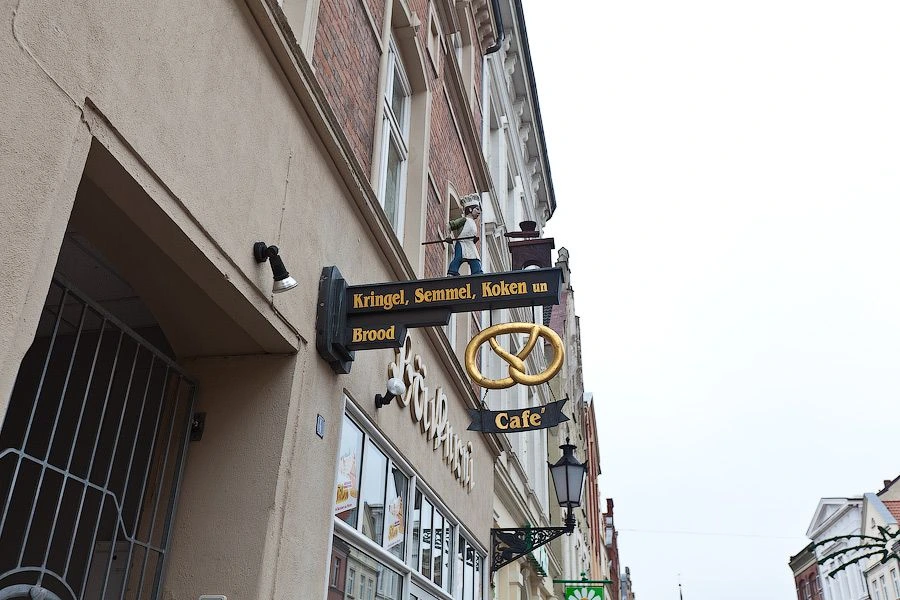
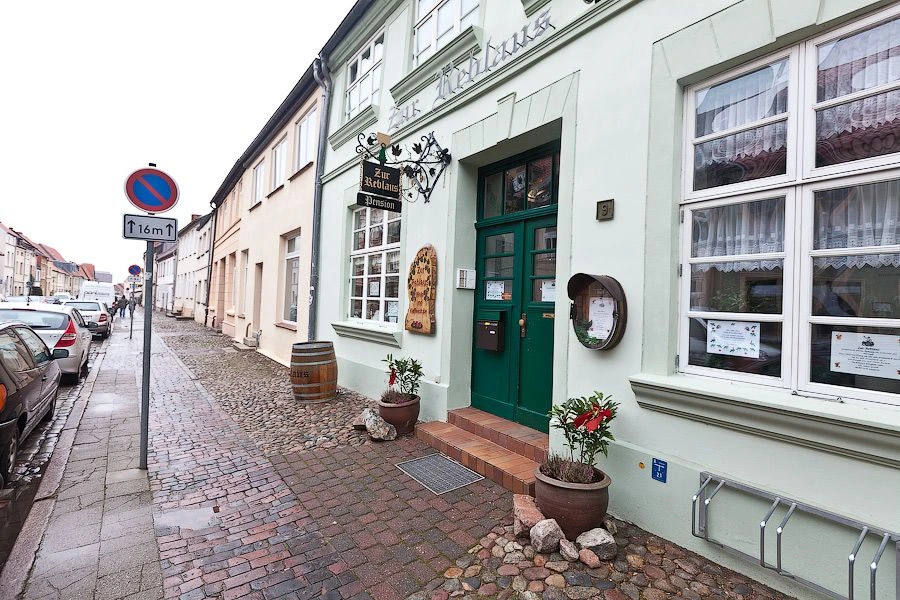
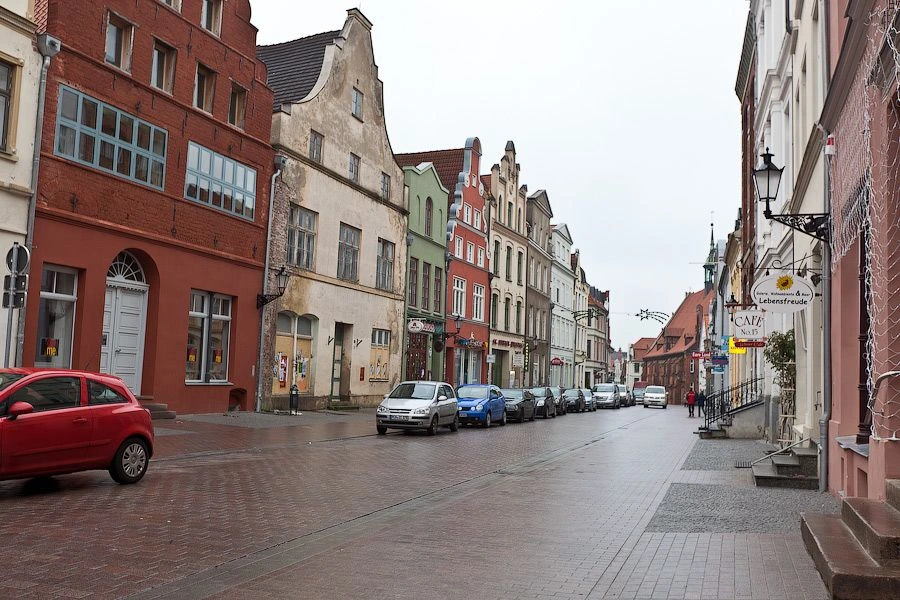
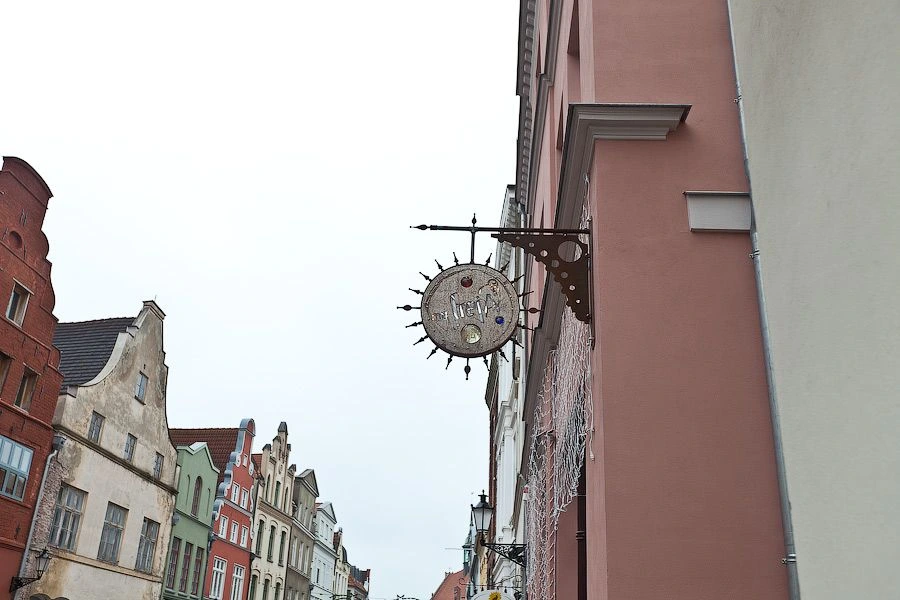
Another church, very similar in size and type to the stables.
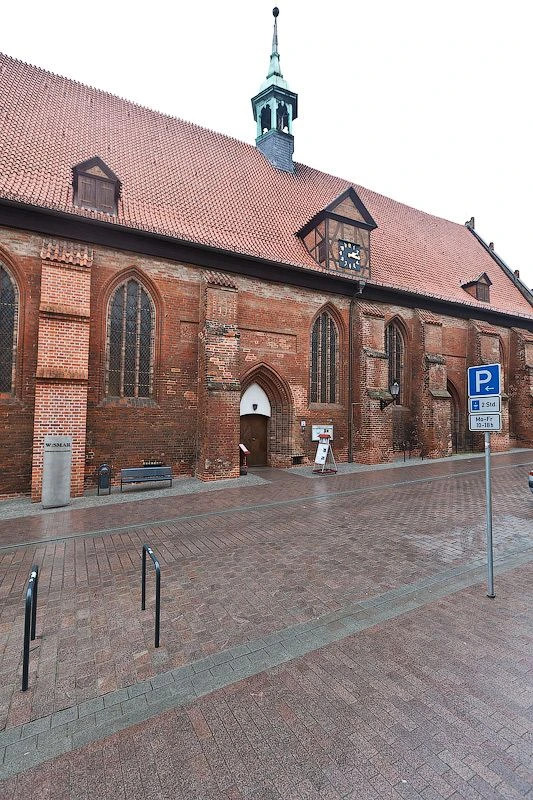
Signboards are interspersed with restored posters, which are sometimes painted directly on the walls.
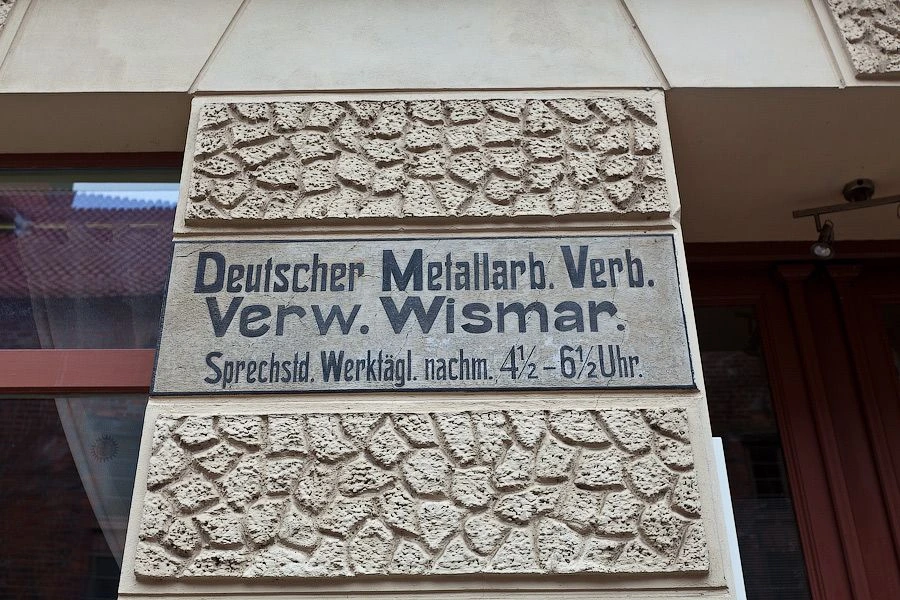
And everywhere - echoes of the past.

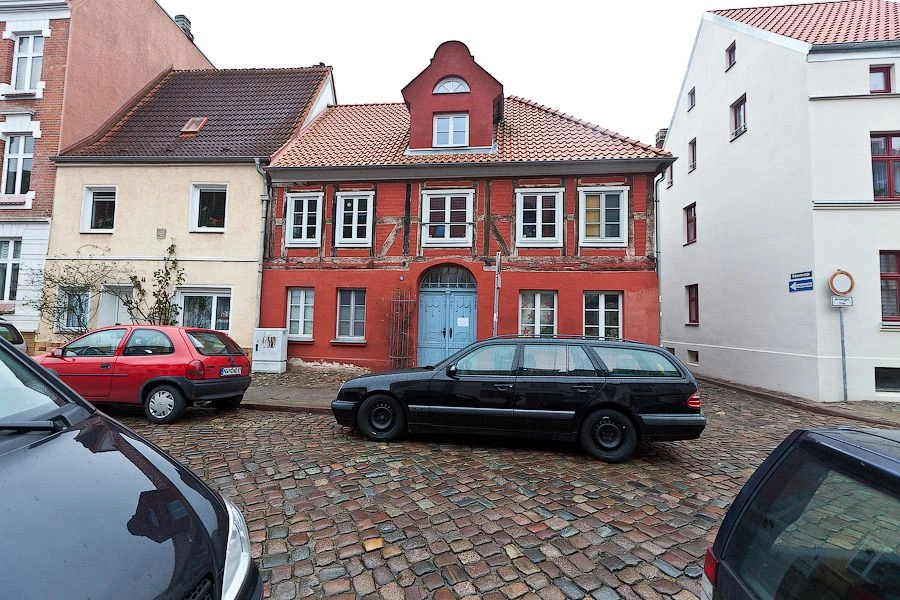
Note - lie on the edge of sandbags. And no one is stealing!
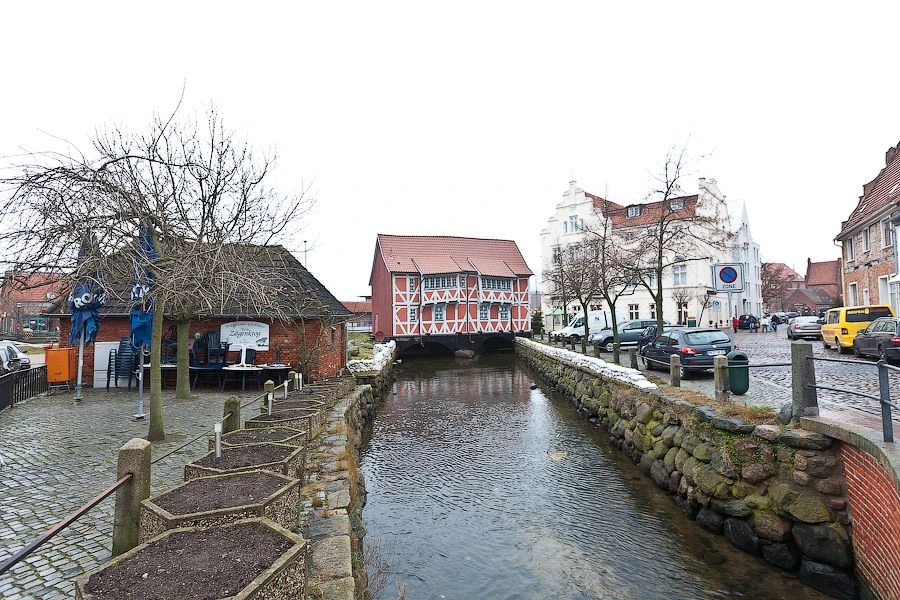
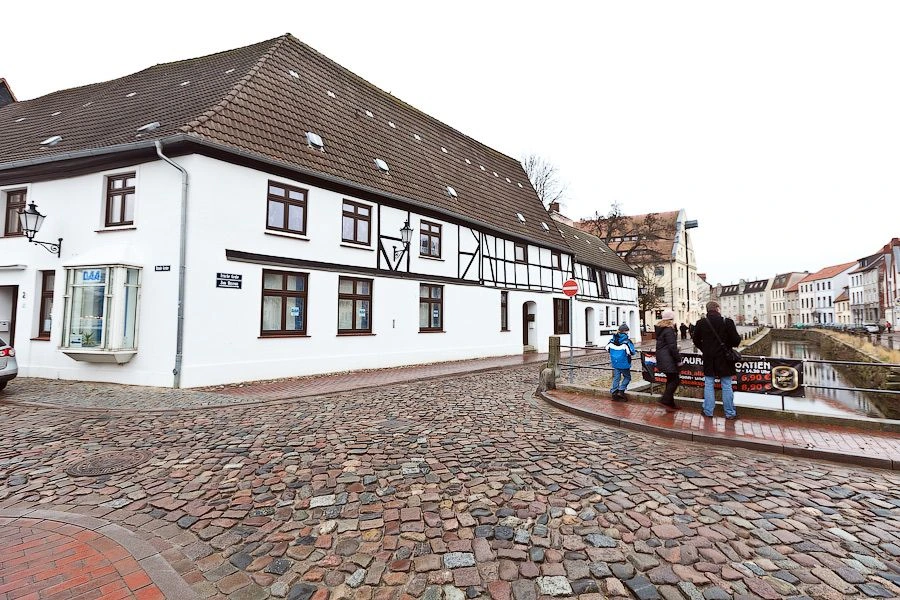
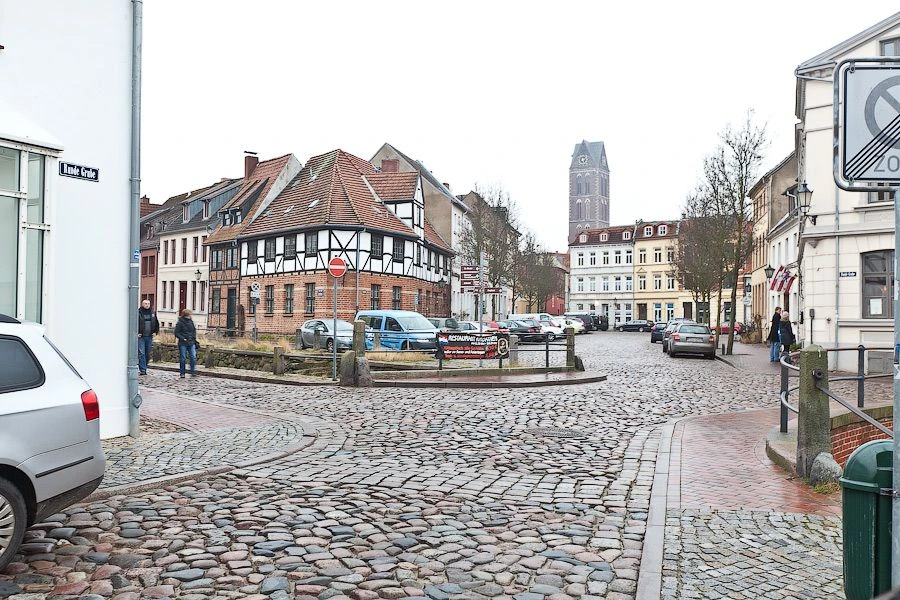
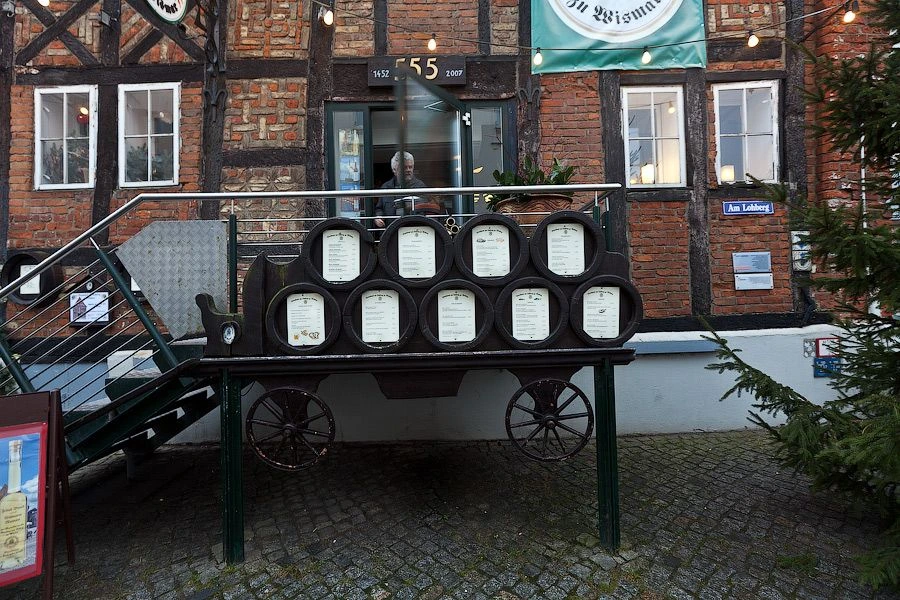
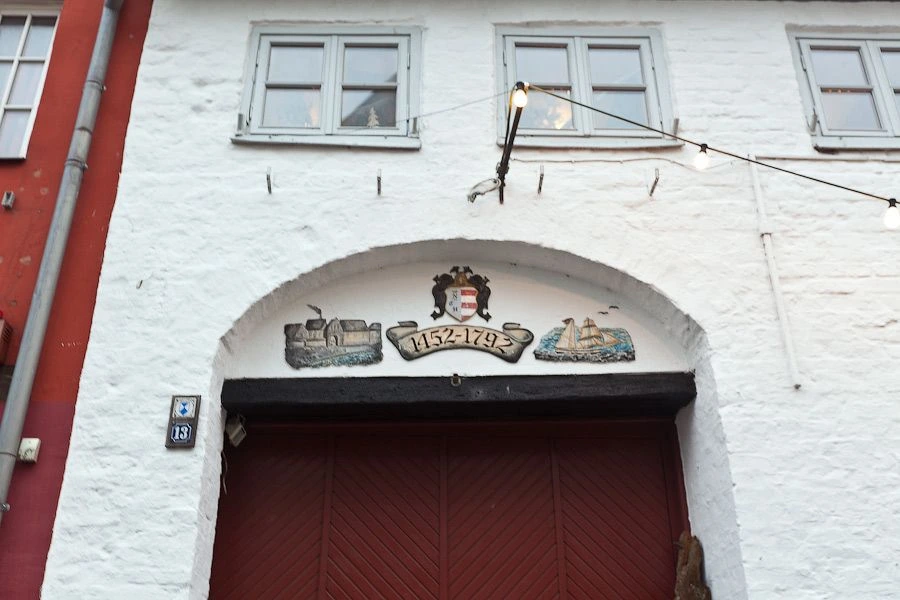
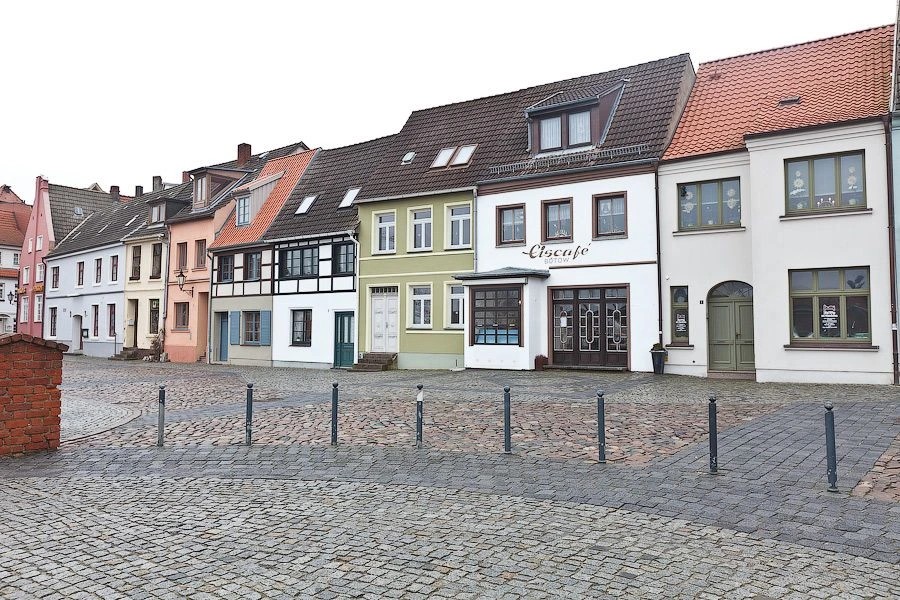
One goal - that is all that remains of the fortress wall surrounding the old city.
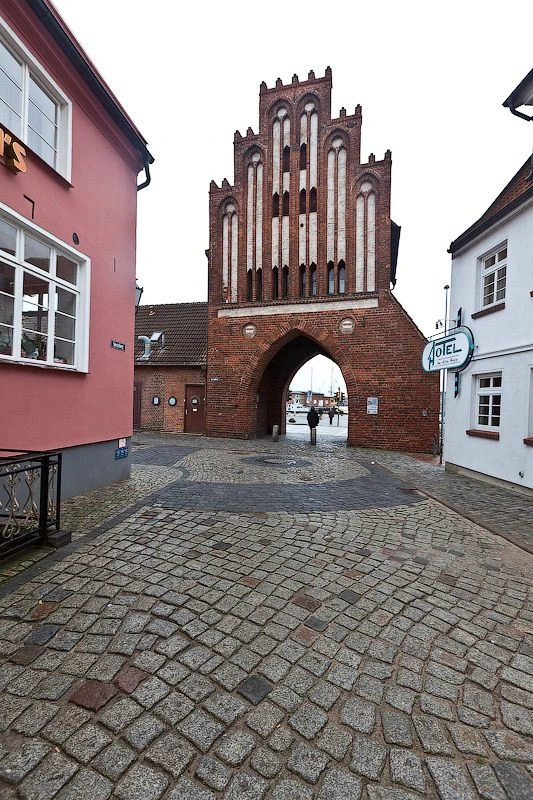
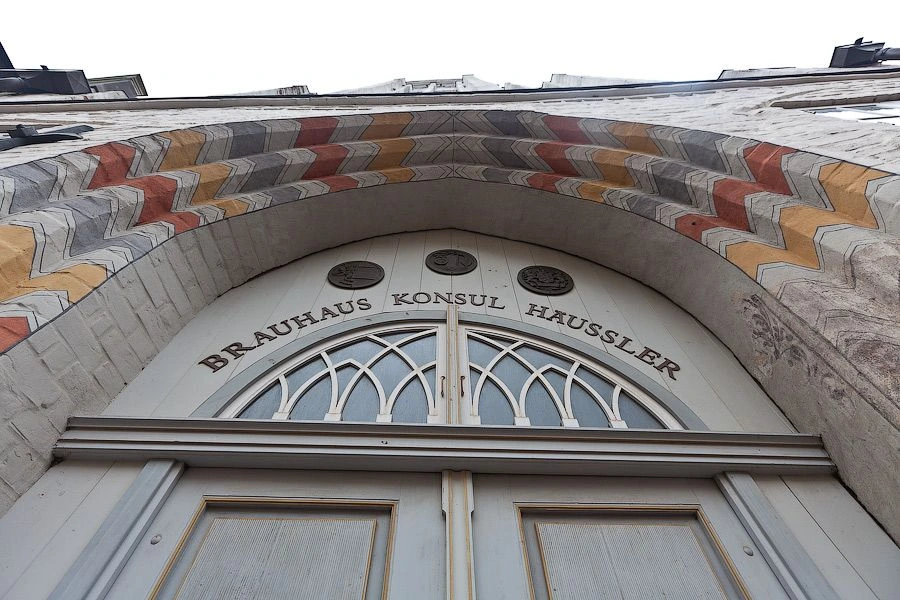
From the yard is not so rosy ...
